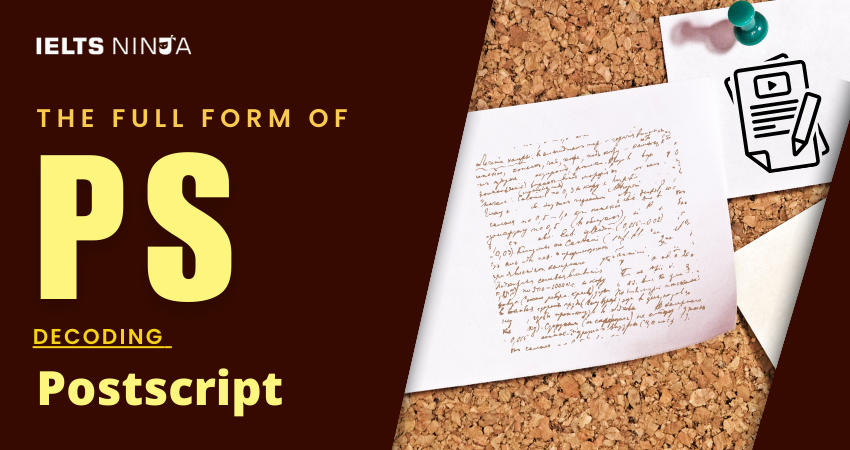In the realm of written communication, “PS” is a well-known abbreviation. The full form of PS, which stands for Postscript, is a term used to add additional information or thoughts to a letter or document after the main body has been written. In this comprehensive guide, we will explore the details of PS, its purpose, and its historical significance in written correspondence.
What is PS?
“Postscript”, often abbreviated as PS, is a Latin term that translates to “after writing”. It is used in written communication to add something to a message after the writer has finished the main body of text. In handwritten or typed letters, the PS section typically appears below the writer’s signature.
Purpose of PS
The use of PS serves several purposes:
Adding Important Information:
PS is commonly used to include crucial details or thoughts that the writer may have forgotten to include in the main body of the message.
Emphasizing Key Points:
Writers use PS to emphasize or highlight specific points they want to ensure the recipient notices.
Clarifications:
It can be used for clarifying a statement or providing additional context.
Last-Minute Updates:
PS is handy for providing updates or information that became available after the initial message was written.
Personal Notes:
In personal correspondence, PS might include a personal note or message separate from the main content.
Also Read: Best online IELTS coaching & training academy
PSs Historical Significance
The use of PS has a historical significance rooted in traditional letter writing. In handwritten letters, it was challenging to add content once the main body of text was complete. PS allowed writers to insert additional thoughts or information without rewriting the entire letter.
Variations of PS
While PS is the most common abbreviation, there are variations used in different languages and contexts:
- PPS (Post Postscript): Sometimes, a writer may add a second postscript, known as PPS, to include further information.
- Sincerely: In formal letters, especially business letters, “Sincerely” is often followed by a colon (:) and then additional information, which serves a similar purpose to PS.
Modern Use – PS
In the age of digital communication, the use of PS has evolved. In email, for instance, people often use “PS” or “P.S.” to add a postscript to their messages. This can be done at the end of the email or within the main body, separated by a line or brackets.
Conclusion
Postscript (PS) remains a valuable and versatile tool in written communication, allowing writers to add essential information, emphasize key points, and provide updates or personal notes in a convenient and concise manner. While its usage has adapted to modern digital communication, it still serves its fundamental purpose of enhancing the clarity and completeness of written messages.
As individuals continue to communicate through various written mediums, PS remains a recognizable and effective way to supplement the main body of text with additional insights and information.








